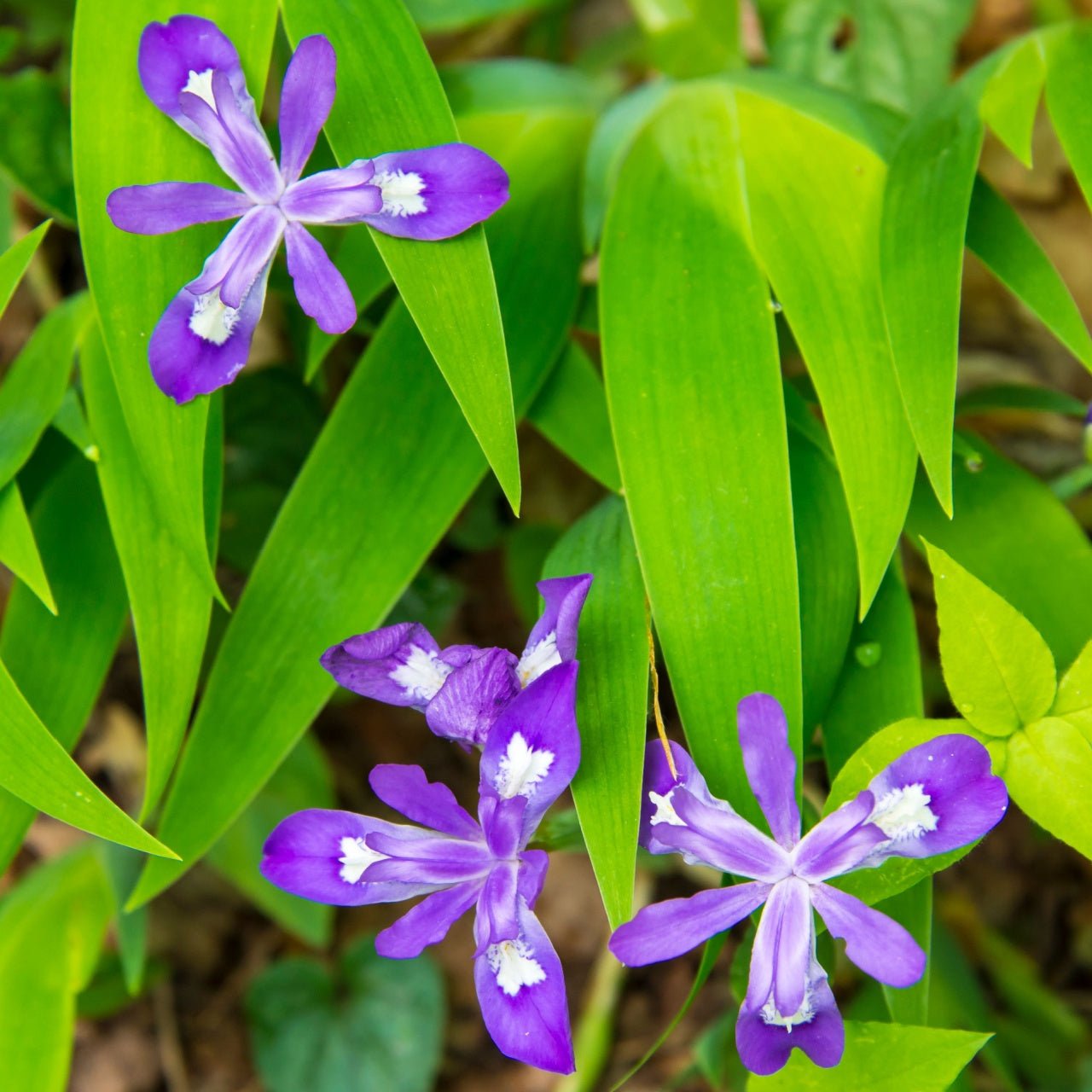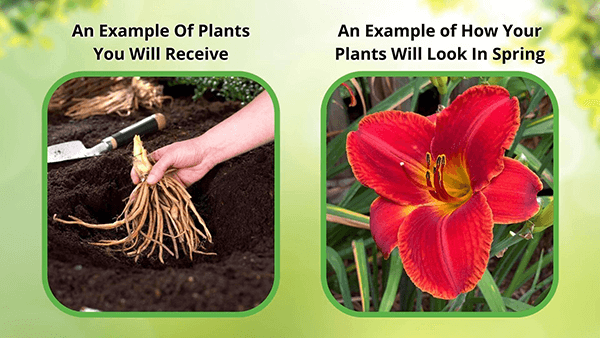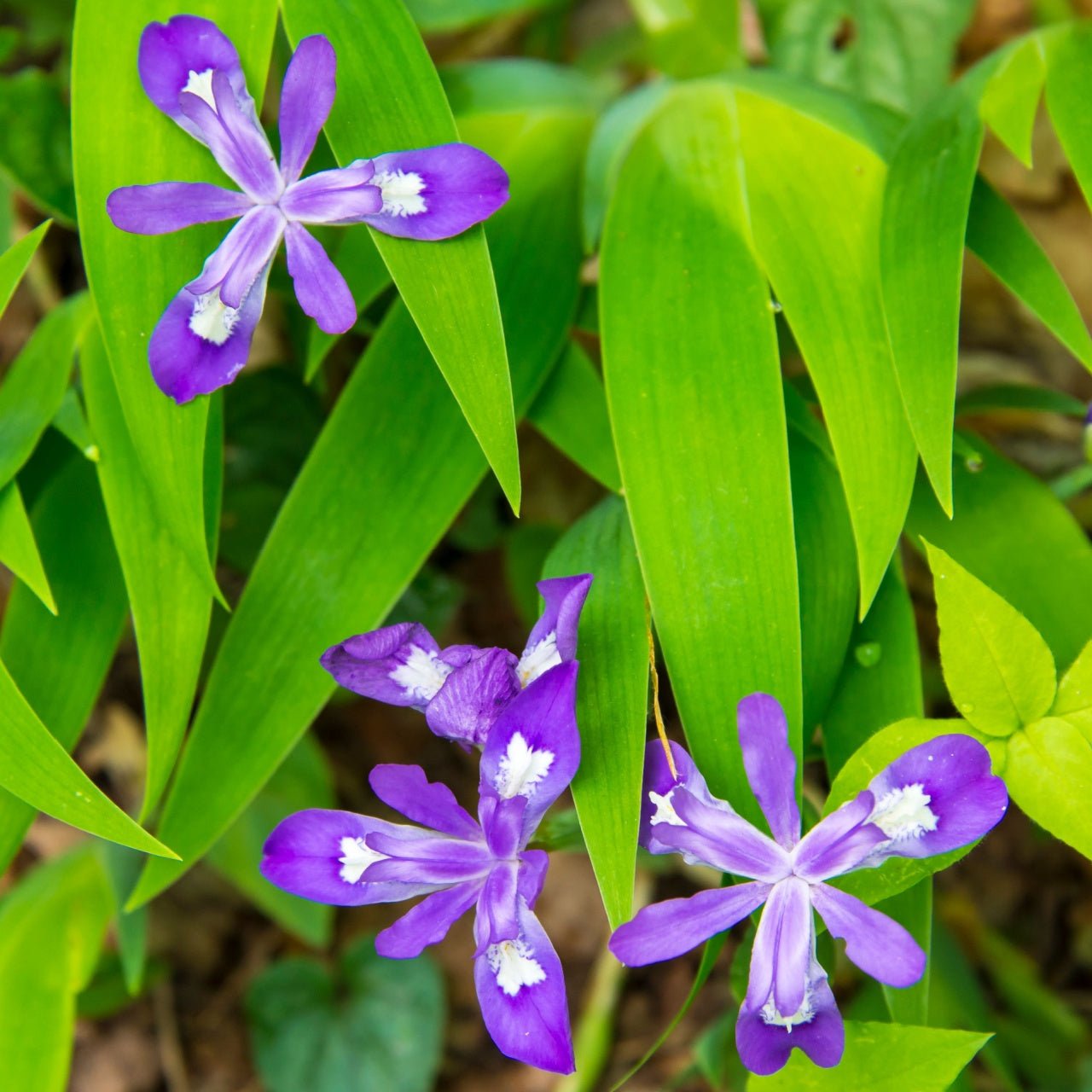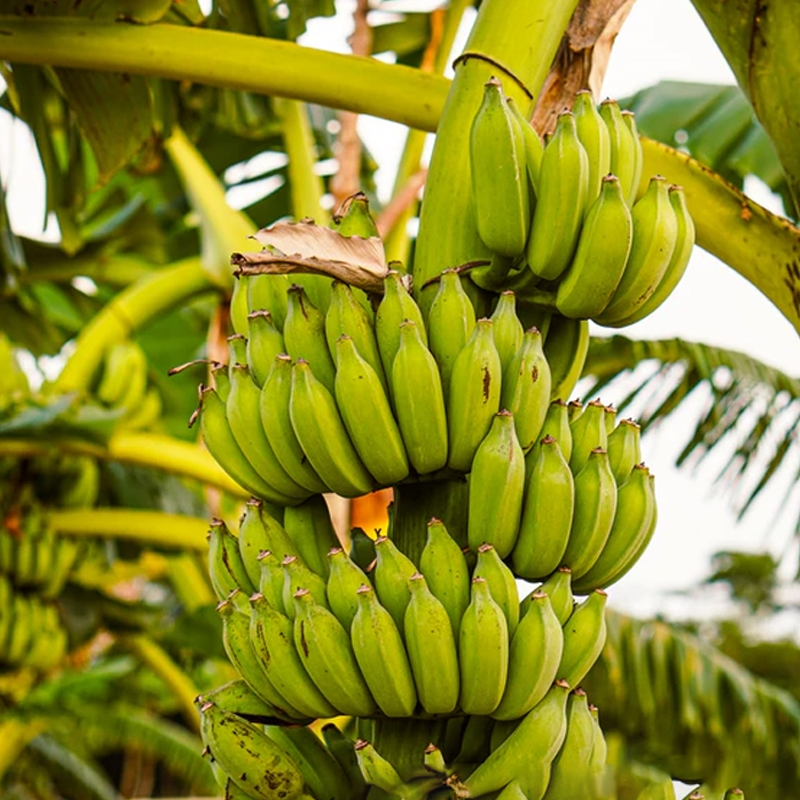




Dwarf Crested Iris
Ideal for small garden spaces
Drought-tolerant and resilient
Great for shady garden spots
Thrives in
ZONE 3ZONE 4ZONE 5ZONE 6ZONE 7ZONE 8This plant ships:
Ships Week of May 5thDwarf Crested Iris - Iris Cristata
Dwarf Crested Iris is a delicate perennial with small, slender leaves and charming, blue to purple flowers, each adorned with delicate white or yellow crests on their petals. It is a stunning and versatile plant with numerous landscaping benefits. This low-growing perennial herb is native to North America and thrives in woodland settings, making it an excellent addition to various garden styles.
While exploring the lovely possibilities of dressing up your gardens, they will undoubtedly catch your eye. This is a relatively short perennial plant native to the eastern United States and enjoyed in gardens throughout the country and abroad. While many people are familiar with them, they are often unaware of their appealing traits. What are some of the notable benefits of planting it in your yard?
Add Beautiful Pops of Color With Dwarf Crested Iris
This plant is highly regarded for its many colors. The branches are brown and combine with yellowish-green or green leaves and stunning flowers. The plant reaches four inches in height with the stem and the flower. The fragrant flowers bloom in April and May, revealing shades of purple, lilac, lavender, blue, and pale blue. The rarer colors are pink and white. Additional colors include a white center and vibrant shades of yellow, orange, purple, and dark blue on its outer petals.
Birds Love Dwarf Crested Iris Seeds
The seeds produced by the flowers in the spring are under a centimeter in diameter, so they are easily dispersed by birds and the wind. In addition, this is a creeping plant that expands by shooting out long roots underground. While their growth is not usually noticeable only a year after planting them, the plants’ roots expand exponentially. This allows you to enjoy a blanket of them in your yard after several years.
They Are Shade Loving Perennials
This plant is commonly found in the wild in wooded areas. It can also grow in the crags of ledges, on a rocky landscape, or in ravines. This makes it ideal for beautifying a formal garden or a native or xeriscape yard with rock features.
Attract Wildlife With It
While some wildlife is welcome and desired in your yard, other species can cause damage. This Dwarf Crested Iris deters deer on your property to safeguard the different plants in your yard that deer may be drawn to. In addition, they are fragrant and attract bees and hummingbirds.
What is the Habitat of It
They grow well in half shade or all shade and so is ideal for woodland gardens or semi-shade borders. It likes well-drained soil, but can grow in sandy or loamy soils.
Do they Blossom
They blossoms in early spring and has pale lavender, violet or pale blue flowers with yellow or white spikes. It is pollinated by butterflies and a lovely addition to a late spring bouquet.
Is It Care-Free
It is quick and easy to propagate, and the plant needs very little care after you've got it going. It spreads slowly, it produces a carpet hence weeds are suppressed and your compound looks beautiful for the same.
Will They Survive The Pot Life
They can be grown in containers because it is small. Plant it in a drainage pot, then plant it in a shaded place for growth.
It is Able To Be Divided
And eventually the plant gets too crowded, about 3-5 years. Splitting the rhizomes ensures they don't get infected but it also lets new plants survive in your garden.
This Is How Your Plants Will Look upon Delivery

Bloom Season
Spring
Bloom/Foliage Color
Purple
Height at Maturity
Under 12"
Care
Dwarf Crested Iris thrives in well-drained soil and requires regular watering to maintain soil moisture. Fertilize lightly in early spring and avoid over-watering. Remove spent blooms and cut back foliage after flowering to promote new growth.
Plant Reproduction
Dwarf Crested Iris spread quickly and easily using underground stems called rhizomes.
Shipping date depends on the date displayed and chosen when you order from the product's page.
We only accept returns on plants verified dead. If you think your plants have died, we offer a 1 year warranty, please use this File a Claim Link to verify dead plants and start with return warranty process.






.png?v=1722111345632&em-origin=cdn.accentuate.io&em-format=auto)
Natural Woodland Beauty:
This iris species is perfect for naturalizing in woodland gardens or shaded landscapes. It blends seamlessly with other native plants, creating a harmonious and natural garden setting.
Elegant Blooms:
The Dwarf Crested Iris produces delicate, violet-blue flowers with fringed petals that add a touch of elegance to any garden. These stunning blooms make it a standout plant, enhancing the visual appeal of shaded areas.
Compact Growth:
Ideal for small spaces, the Dwarf Crested Iris has a compact growth habit, reaching only 6-8 inches in height. Its petite size makes it perfect for borders, rock gardens, and container planting.
Diverse and Fragrant:
The fragrant flowers bloom in April and May, showcasing a palette of purple, lilac, lavender, blue, and pale blue. Rare colors like pink and white also appear, with additional hues including a white center and striking shades of yellow, orange, purple, and dark blue on the outer petals.
Caring Tips
How do I care for my Dwarf Crested Iris?
Each box contains detailed care instructions and information about your product. But here's the basics.
Care Tips
Dwarf Crested Iris thrives in well-drained soil and requires regular watering to maintain soil moisture. Fertilize lightly in early spring and avoid over-watering. Remove spent blooms and cut back foliage after flowering to promote new growth.
Light Requirements
Dwarf Crested Iris thrives in partial to full shade. It prefers dappled sunlight or filtered light, making it ideal for woodland gardens or shaded areas. Direct sunlight can be too harsh, causing stress and reducing its vibrant blooms.
Hardy Planting Zones
3 • 4 • 5 • 6 • 7 • 8
Header
Use this content to share information about your store and products.
Frequently Asked Questions
How often should I water my plants?
How do I know if my plant is getting too much or too little sunlight?
What should I do to prepare my plants for winter?
What are the signs that my plant needs fertilizing?
How can I prevent pests from damaging my plants?
How do I choose the right plant for my climate zone?






